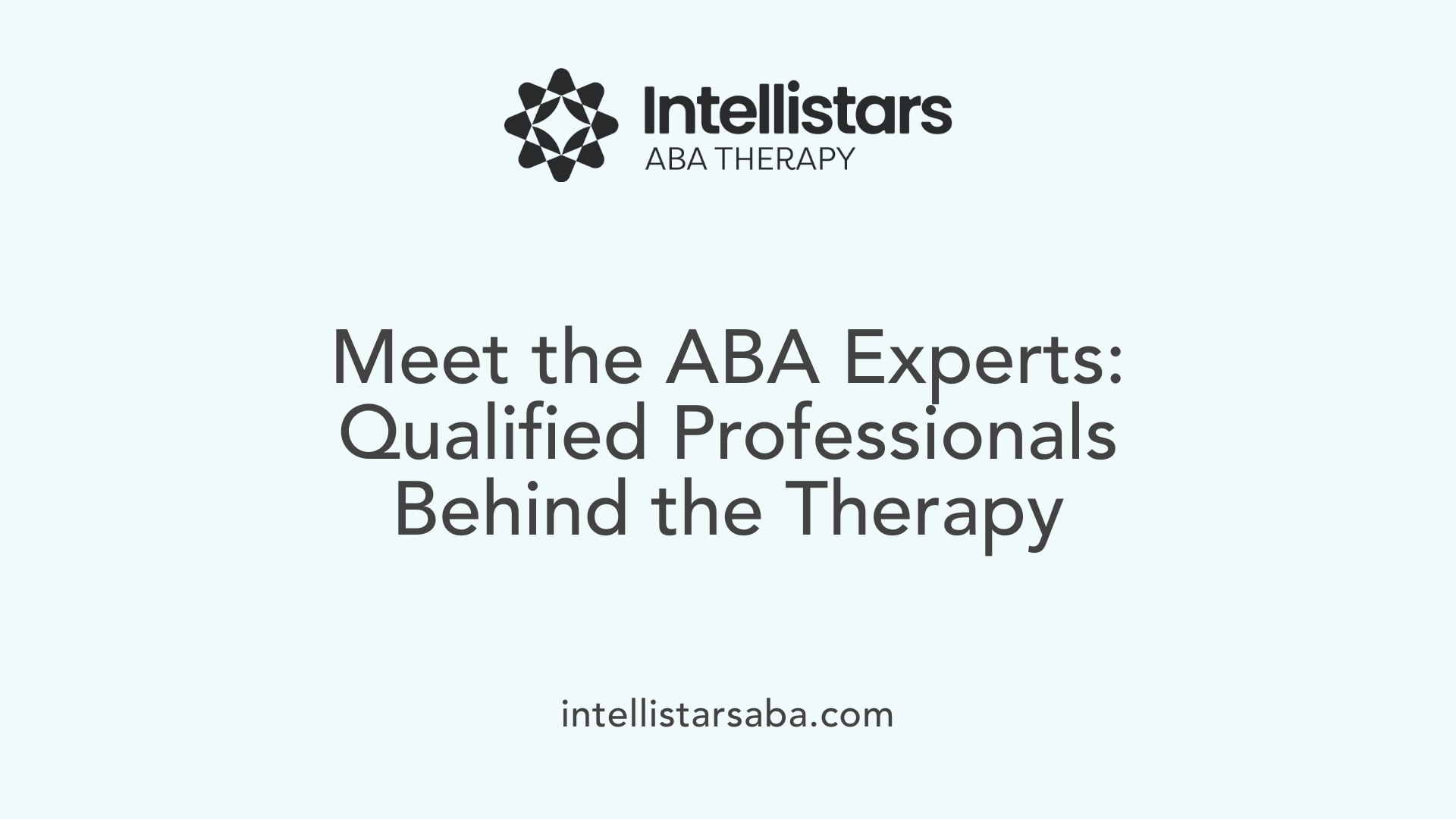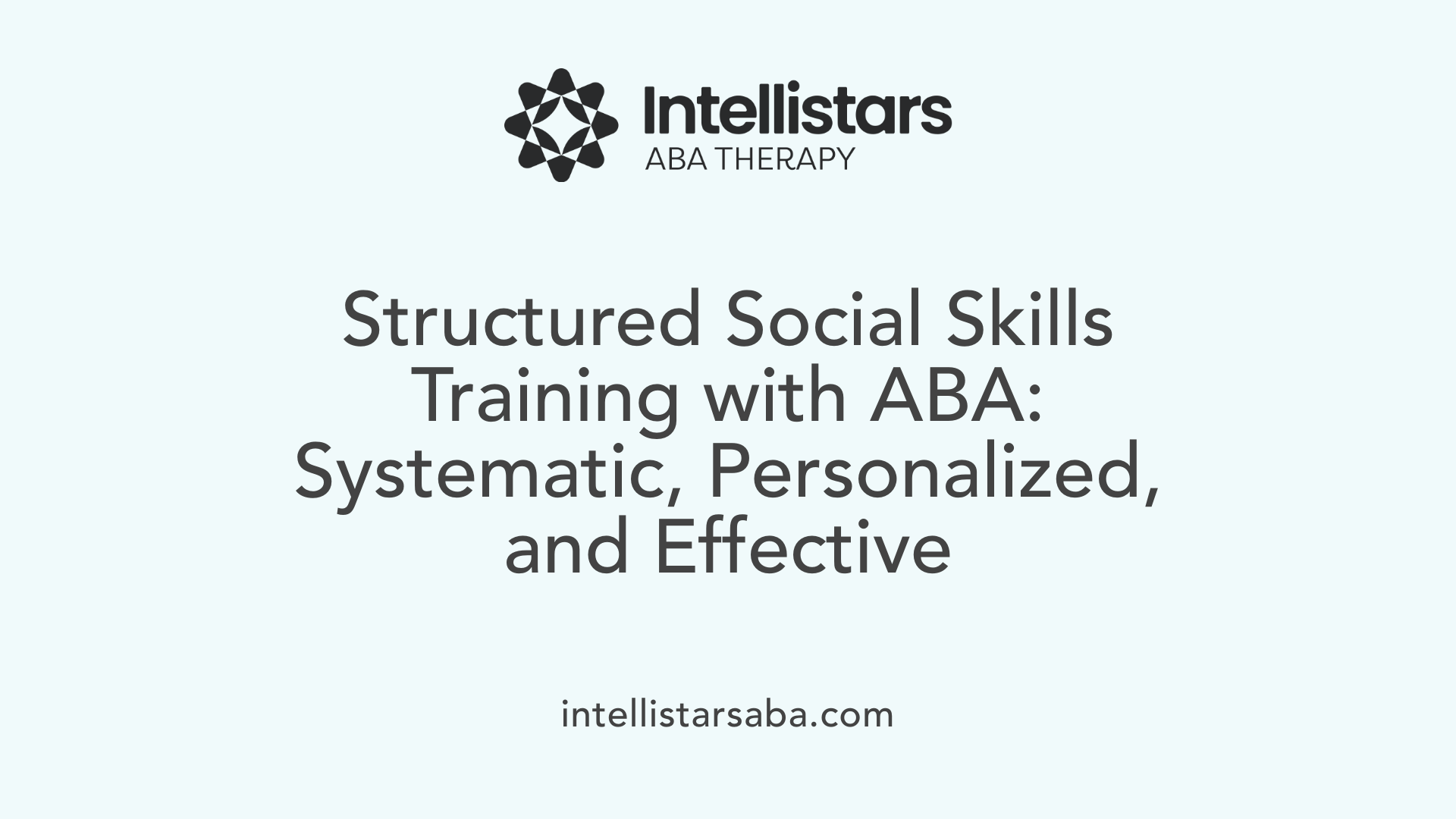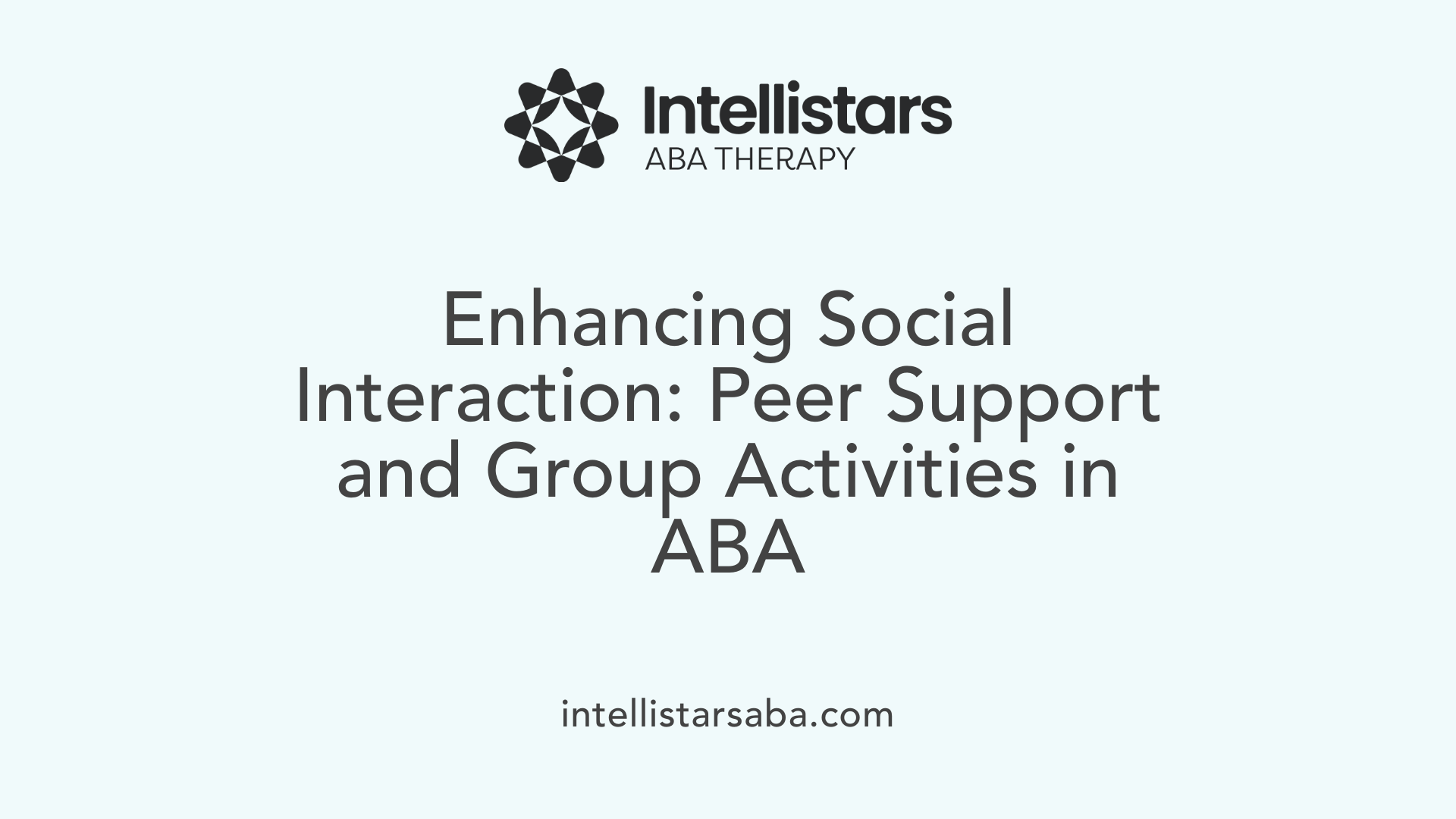The Essential Link Between ABA Therapy and Social Development
Applied Behavior Analysis (ABA) therapy has become a cornerstone in supporting individuals with autism, particularly in the development and improvement of social interactions. Grounded in scientific principles, ABA therapy systematically teaches and reinforces social skills while reducing behaviors that may interfere with social engagement. This article explores how ABA therapy supports social competence in autism, detailing its approaches, techniques, and effectiveness as verified by extensive research and professional standards.
What is Applied Behavior Analysis (ABA) Therapy?
Definition and Scientific Basis of ABA Therapy
Applied Behavior Analysis (ABA) therapy is a science-based intervention that uses learning principles to understand and modify behavior. Rooted in operant conditioning, it applies systematic approaches to increase helpful behaviors and decrease harmful or disruptive ones.
Targeted Behaviors and Skills
ABA therapy primarily focuses on improving skills such as language, social interaction, attention, memory, and academics. It is individualized to meet each person's unique needs and emphasizes enhancing social skills and daily living capabilities.
Use of Operant Conditioning and Learning Principles
Core to ABA is positive reinforcement—rewarding desirable behaviors to encourage their recurrence. Techniques include discrete trial training, natural environment teaching, social stories, video modeling, and peer-mediated instruction. The A-B-Cs model helps professionals understand antecedents and consequences of behaviors, allowing tailored intervention strategies.
Benefits and Proven Outcomes for Individuals with Autism
ABA therapy is widely recognized and supported by organizations like the US Surgeon General and the American Psychological Association. Intensive and long-term ABA programs have been shown through more than 20 studies to significantly improve intellectual abilities, language, social skills, and daily living functions in children with autism. Ongoing assessment and data-driven adjustments ensure personalized progress towards meaningful outcomes.
ABA interventions are typically delivered by qualified professionals such as Board-Certified Behavior Analysts (BCBAs) and Registered Behavior Technicians (RBTs) across various settings including home, school, and community, enabling broad support for individuals with autism.
Who Provides ABA Therapy and What Are Their Qualifications?

Types of Professionals Delivering ABA Therapy
ABA therapy is delivered by a team of qualified professionals, primarily including Board Certified Behavior Analysts (BCBAs), Registered Behavior Technicians (RBTs), and behavior therapists. These individuals work collaboratively to implement therapy tailored to each child's unique needs.
Educational Background and Certification
BCBAs typically hold a master's degree in behavior analysis, psychology, education, or a related field. Their certification from the Behavior Analyst Certification Board (BACB) is earned after completing specialized coursework, supervised clinical fieldwork, and successfully passing the board examination. RBTs and behavior therapists receive targeted training and certification from the BACB, enabling them to implement therapy plans under professional supervision.
Roles and Responsibilities
BCBAs are responsible for conducting comprehensive assessments, designing personalized ABA programs, setting treatment goals, and monitoring ongoing progress. RBTs and behavior therapists provide direct one-on-one therapy sessions, applying ABA techniques such as positive reinforcement, discrete trial training, and social skills teaching. They also collect data on the child's behavior to inform program adjustments.
Importance of Ongoing Supervision and Training
The quality of ABA therapy depends heavily on continuous supervision by certified BCBAs, who regularly review therapy data, coach implementing personnel, and ensure fidelity to evidence-based practices. Ongoing professional development keeps therapists up-to-date on new research and effective intervention strategies, ensuring that children receive the best possible care throughout their treatment journey.
Core Behavioral Techniques in ABA Therapy to Enhance Social Skills

Positive reinforcement and its role in learning social behaviors
Positive reinforcement is fundamental in ABA therapy, where desirable social behaviors are encouraged by rewarding them. This strategy increases the likelihood that social skills such as eye contact, turn-taking, and verbal communication are repeated and strengthened over time. Rewards can include praise, tokens, or access to preferred activities, helping individuals link positive outcomes to their social actions.
Discrete Trial Training (DTT) and Natural Environment Teaching (NET)
ABA uses Discrete Trial Training (DTT) to teach social skills in a highly structured way. DTT breaks skills into small, manageable steps that are taught through repeated, consistent trials with immediate feedback. On the other hand, Natural Environment Teaching (NET) encourages learning in everyday settings, making social skills more relevant and easier to generalize. NET promotes spontaneous social interactions in places like home, school, or the community.
Use of modeling, prompting, fading, and chaining
Modeling involves demonstrating desired social behaviors such as initiating conversations or sharing toys, allowing individuals to imitate these skills. Prompting offers guidance or cues to encourage correct responses, which are gradually reduced in a process called fading to promote independence. Behavior chaining breaks complex social tasks into sequential steps, teaching each part one at a time until the full behavior is mastered.
Application of extinction for reducing problematic behaviors
Extinction is employed to decrease disruptive or harmful behaviors by withholding the reinforcement that previously maintained them. Without positive outcomes, these problematic behaviors tend to diminish, allowing space for positive social skills to replace them.
These combined techniques form a comprehensive toolkit in ABA therapy, enabling tailored approaches that effectively teach new social skills while reducing behaviors that interfere with successful social interactions.
ABA Therapy's Structured Approach to Social Skills Training (SST)

Systematic assessment and personalized goal setting
ABA therapy begins with a thorough assessment to identify the individual's specific social skill deficits. Qualified professionals, such as Board-Certified Behavior Analysts (BCBAs), set personalized goals tailored to the child's unique needs. Ongoing progress monitoring ensures interventions remain effective and responsive.
Use of the A-B-Cs model to understand behavior triggers and outcomes
ABA uses the Antecedent-Behavior-Consequence (A-B-Cs) model to pinpoint what triggers social challenges and what follows those behaviors. This understanding guides targeted interventions to increase positive social interactions and reduce disruptive behaviors.
Structured teaching methods like DTT and naturalistic strategies
Two main teaching methods are utilized: Discrete Trial Training (DTT) provides clear, repetitive instruction in structured settings, while Natural Environment Teaching (NET) promotes learning within real-life contexts. Both approaches systematically teach skills such as eye contact, turn-taking, and conversational reciprocity.
Incorporation of social stories, role-play, and video modeling in SST
Behavioral modeling through role-playing helps children practice social behaviors and understand social cues. Social stories are used to explain social situations visually and conceptually, helping with comprehension and coping. Video modeling offers visual examples of appropriate social interactions, enhancing learning and generalization across settings.
Strategies for Teaching Key Social Skills Through ABA

Teaching Eye Contact, Joint Attention, Turn-Taking, and Reciprocal Conversations
ABA therapy systematically teaches foundational social skills such as eye contact and joint attention, which are critical for effective communication. Techniques include behavioral modeling and role-playing to help children practice turn-taking and reciprocal conversations in structured settings.
Enhancing Verbal and Non-Verbal Communication
To improve overall communication, ABA utilizes methods like video modeling and social stories that promote both verbal expressions and non-verbal cues like gestures and facial expressions. These strategies help children better understand and convey messages in social interactions.
Developing Emotion Recognition and Empathy
ABA programs incorporate targeted activities that teach children to identify emotions in themselves and others. Building empathy involves practice with recognizing social cues and responding appropriately, often supported through role-playing and visual supports.
Building Play Skills and Group Participation
Play-based interventions encourage children to engage with peers through guided play sessions. Group participation skills are fostered by peer-mediated interactions and natural environment teaching, enabling children to navigate social scenarios like sharing, collaboration, and turn-taking.
Social Problem-Solving and Coping with Social Challenges
ABA helps children develop social problem-solving skills by using social stories and real-life scenarios to teach appropriate responses to challenging situations. These strategies improve emotional regulation and coping mechanisms during social conflicts or misunderstandings.
These strategies form a comprehensive framework within ABA to boost social competence in children with autism, ensuring skill generalization across home, school, and community settings.
Promoting Social Interaction Through Peer-Mediated and Group Interventions

Role of Peer Interactions and Group Therapy Sessions
Peer interactions play a vital role in Applied Behavior Analysis (ABA) therapy by providing natural social contexts where children with autism can practice and enhance their social skills. Group therapy sessions, structured and guided by qualified professionals, create an environment for participants to engage in social exchanges, promoting real-life social learning opportunities.
Use of Peer-Mediated Instruction to Encourage Social Participation
Peer-mediated instruction involves training typically developing peers to support and encourage social engagement in children with autism. These trained peers act as social models, prompting and reinforcing social behaviors like turn-taking, initiating conversations, and sharing activities. This strategy helps children generalize social skills beyond therapy sessions into everyday interactions.
Fostering Social Reciprocity and Emotional Regulation
ABA programs utilizing peer-mediated and group interventions emphasize social reciprocity—the mutual and responsive exchange in communication—and emotional regulation. Children learn to recognize social cues, respond appropriately, and manage their emotions within peer interactions, which leads to increased social participation and improved peer relationships.
Facilitating Integration in School and Community Settings
To promote meaningful social inclusion, ABA interventions extend beyond the therapy room into schools and community spaces. Collaboration with educators and community members helps ensure that social skills learned through peer-mediated approaches are practiced and reinforced in diverse settings, fostering broader social integration and participation for children with autism.
Measuring and Adjusting Progress in ABA Therapy
How is the progress of individuals undergoing ABA therapy typically measured and adjusted?
Progress in ABA therapy is carefully tracked through systematic data collection methods. Therapists use frequency counts to record how often a behavior occurs, interval recordings to note if a behavior happens during specific time frames, and visual charts to monitor changes over time. These tools help provide a clear picture of behavioral improvements or challenges.
Standardized instruments, such as the Verbal Behavior Milestones Assessment and Placement Program (VB-MAPP), offer objective benchmarks to evaluate communication and social skills development. These assessments help professionals set personalized goals and measure skill acquisition effectively.
Data collected from sessions undergo thorough analysis to identify trends, assess progress, and pinpoint areas needing adjustment. This ongoing evaluation allows therapists to fine-tune intervention strategies, ensuring they remain tailored to the individual's evolving needs.
Parental input and observations from real-world environments are integral to this process. Incorporating feedback from caregivers offers valuable insight into how skills generalize outside clinical settings and informs necessary modifications to the therapy plan.
Together, these methods create a dynamic system of progress monitoring and treatment adaptation, optimizing outcomes and supporting continuous social and behavioral development in individuals receiving ABA therapy.
Generalization and Ongoing Support for Social Competence
Applying social skills across various real-life settings
ABA therapy places great emphasis on helping individuals with autism generalize social skills beyond therapy sessions. Skills such as eye contact, turn-taking, and understanding social cues are practiced not only in clinical environments but also in natural settings like home, school, and community. This ensures that learned behaviors become functional and meaningful in everyday life.
Collaboration between therapists, parents, schools, and communities
Effective social competence development in ABA therapy involves a collaborative approach. Board-Certified Behavior Analysts (BCBAs), Registered Behavior Technicians (RBTs), parents, teachers, and community members work together to support the individual’s social growth. This teamwork promotes consistent encouragement and reinforces social behaviors across multiple settings.
Providing visual supports and social stories to facilitate understanding
ABA programs often use visual aids and social stories to enhance social learning. Visual supports help individuals understand social expectations and routines, while social stories prepare them for social interactions by narrating social scenarios. These tools improve comprehension and coping with social challenges.
Ensuring consistency in reinforcement and skill practice
Consistent positive reinforcement—including praise, tokens, or preferred activities—is fundamental for encouraging social skill demonstrations. Therapists and caregivers maintain ongoing reinforcement schedules and provide regular opportunities to practice skills. Continuous progress monitoring allows for personalized adjustments, maintaining momentum in social competence development.
Parental Involvement and Home Strategies to Reinforce Social Skill Development
Encouraging playdates and social opportunities at home
Parents play a vital role in supporting their child's social skills by creating opportunities for interaction. Encouraging playdates allows children with autism to practice social reciprocity, make friends, and improve communication in a relaxed environment. These social gatherings help reinforce the skills taught during ABA therapy, promoting generalization.
Modeling social behaviors and providing visual supports
At home, parents can model positive social behaviors such as greeting others, making eye contact, and taking turns in conversation. Visual supports like social stories and picture schedules help children understand social expectations and routines, making new skills easier to grasp and remember.
Practicing conversations and providing positive reinforcement
Engaging children in role-playing different conversational scenarios enables them to build confidence and improve verbal and non-verbal communication. Parents should provide positive reinforcement through praise, tokens, or preferred activities when social skills are demonstrated, motivating continued practice and success.
The importance of consistency and collaboration with therapists
Consistency in applying strategies learned in therapy is essential at home. Collaborating closely with therapists ensures parents understand individualized goals and effective techniques. This partnership helps tailor interventions and maintain progress, ultimately strengthening the child's social competence across environments.
ABA Therapy: A Proven Pathway to Enhanced Social Interaction in Autism
Applied Behavior Analysis therapy offers a scientifically validated, individualized framework for improving social skills in individuals with autism. Through a combination of positive reinforcement, structured teaching methods, and continuous progress evaluation, ABA therapy targets foundational social behaviors such as eye contact, communication, and emotional understanding. Importantly, it emphasizes generalization across settings and incorporates family and community involvement to sustain meaningful social participation. Supported by robust research and administered by qualified professionals, ABA therapy stands as a leading, evidence-based intervention that fosters social competence and enriches the quality of life for those on the autism spectrum.
References
- Applied Behavior Analysis (ABA)
- Effect of social skills training on interpersonal interactions ...
- ABA Therapy for Enhancing Social Skills in Children with Autism
- ABA Therapy's Impact on Social Skills
- How to Track Progress in ABA Therapy Through Reports ...
- Understanding Monitoring Behavior Through Data in ABA
- The Role of Progress Reports in Monitoring Outcomes in ABA
- Ongoing Assessment in ABA Therapy: A Data-Driven ...
- Applied Behavior Analysis (ABA)
- Applied Behavior Analysis in Children and Youth with Autism ...






